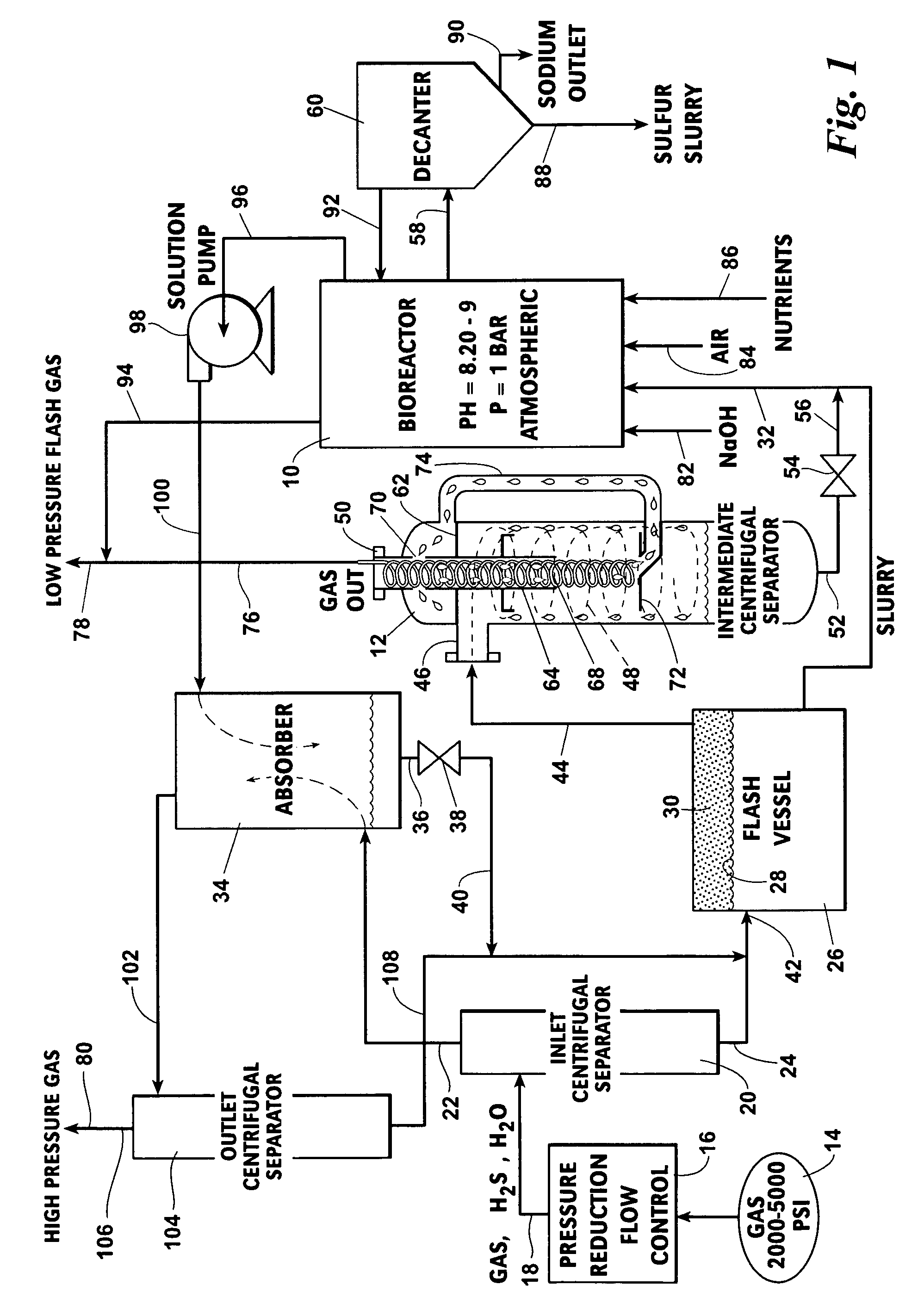Method for extracting H2S from sour gas
a technology of sour gas and h2s, which is applied in the field of extracting h2s from sour gas, can solve the problems of forming foam that can be detrimental to the proper operation of the process, and affecting the safety of the process
- Summary
- Abstract
- Description
- Claims
- Application Information
AI Technical Summary
Benefits of technology
Problems solved by technology
Method used
Image
Examples
Embodiment Construction
[0018]It is to be understood that the invention that is now to be described is not limited in its application to the details of the construction and arrangement of the parts illustrated in the accompanying drawings. The invention is capable of other embodiments and of being practiced or carried out in a variety of ways. The phraseology and terminology employed herein are for purposes of description and not limitation.
[0019]Elements shown by the drawings are identified by the following numbers:
[0020]
10Bioreactor12Intermediate centrifugal separator14Gas source16Pressure reduction flow control18Conduit20Inlet centrifugal separator22Gas outlet piping24Liquid outlet piping26Flash vessel28Liquid level30Gas collection area32Liquid slurry discharge34Counter current absorber36Liquid outlet38Pressure reduction valve40Conduit42Liquid inlet44Gas conduit46Inlet48Swirling stream50Gas outlet52Liquid outlet54Level control valve56Conduit58Inlet60Decanter62Baffle64Vortex finder68Vortex70Circumferenti...
PUM
| Property | Measurement | Unit |
|---|---|---|
| size | aaaaa | aaaaa |
| gravitational force | aaaaa | aaaaa |
| alkaline | aaaaa | aaaaa |
Abstract
Description
Claims
Application Information
 Login to View More
Login to View More - R&D
- Intellectual Property
- Life Sciences
- Materials
- Tech Scout
- Unparalleled Data Quality
- Higher Quality Content
- 60% Fewer Hallucinations
Browse by: Latest US Patents, China's latest patents, Technical Efficacy Thesaurus, Application Domain, Technology Topic, Popular Technical Reports.
© 2025 PatSnap. All rights reserved.Legal|Privacy policy|Modern Slavery Act Transparency Statement|Sitemap|About US| Contact US: help@patsnap.com

